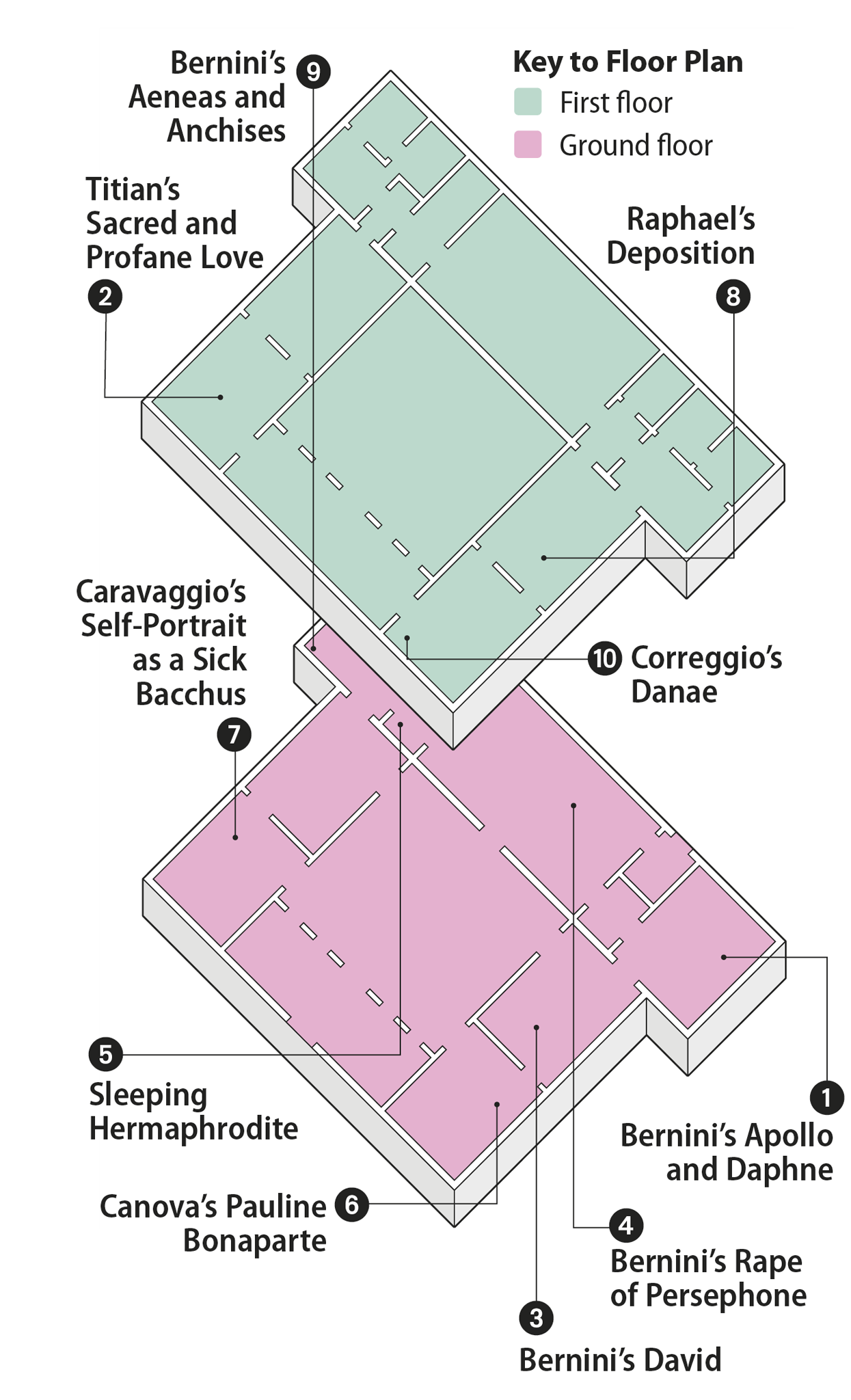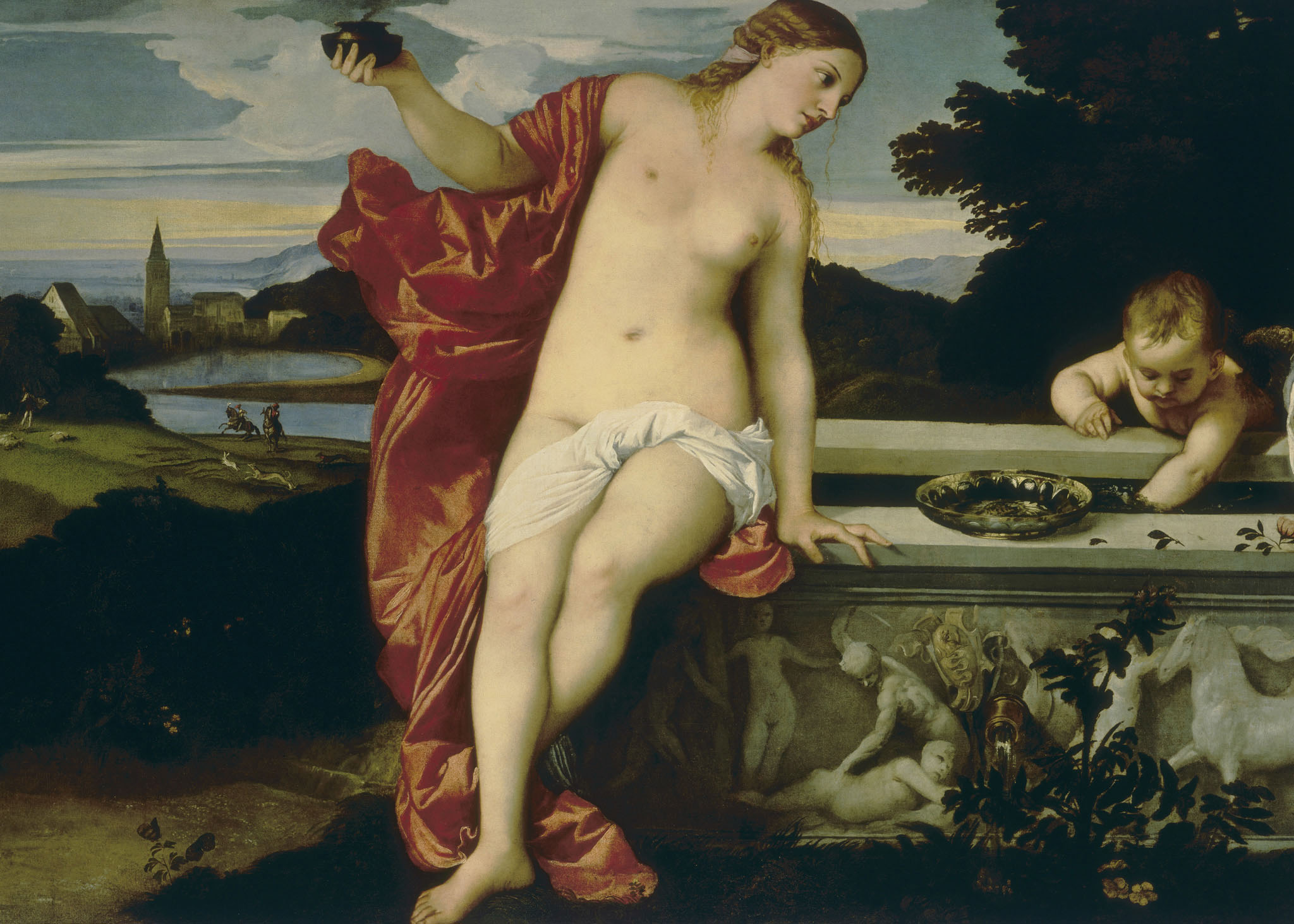
GALLERIA BORGHESE
The Borghese Gallery is one of the world’s greatest small museums. Some of Bernini’s best sculptures and Caravaggio’s paintings sit alongside Classical, Renaissance, and Neo-Classical works in a beautiful, frescoed 17th-century villa set in the Villa Borghese park, all of which once belonged to the great art-lover of the early Baroque, Cardinal Scipione Borghese. He patronized the young Bernini and Caravaggio, in the process amassing one of Rome’s richest private collections.
NEED TO KNOW
![]() Villa Borghese, off Via Pinciana • 06 328 10 • www.galleriaborghese.beniculturali.it, www.tosc.it (for reservations) • Open 9am–7pm Tue–Sun; closed Jan 1, Dec 25 • Adm $15; $7 students (18–25); $2.25 under 18 and journalists (prices may change during exhibitions); free first Sun of the month; max. viewing time 2 hours (mandatory exit after that)
Villa Borghese, off Via Pinciana • 06 328 10 • www.galleriaborghese.beniculturali.it, www.tosc.it (for reservations) • Open 9am–7pm Tue–Sun; closed Jan 1, Dec 25 • Adm $15; $7 students (18–25); $2.25 under 18 and journalists (prices may change during exhibitions); free first Sun of the month; max. viewing time 2 hours (mandatory exit after that)
- There’s a decent café in the museum basement, although the Caffè delle Arti (06 3265 1236) at the nearby Galleria Nazionale d’Arte Moderna is better, with a park view.
- Entrance to the gallery is strictly by reservation. Make sure you book well ahead of time—entries are strictly timed and tickets often sell out days, even weeks, in advance, especially if an exhibition is on.

Museum Floor Plan
1. Bernini’s Apollo and Daphne
A climactic moment frozen in marble (1622–5). As Apollo is inches from grabbing Daphne, the pitying gods transform her into a laurel.
2. Titian’s Sacred and Profane Love
Titian’s (1488/90–1576) allegorical scene (1514), painted for a wedding, exhorts the young bride that worldly love is part of the divine, and that sex is an extension of holy matrimony.

3. Bernini’s David
Young Bernini’s David (1623–4) was the Baroque answer to Michelangelo’s Renaissance version. The frowning face is a self-portrait.
4. Bernini’s Rape of Persephone
Bernini carved this masterpiece at the age of 23 (1621–2). Muscular Hades throws his head back with laughter, his strong fingers pressing into the maiden’s soft flesh as she struggles to break free of his grasp.

5. Sleeping Hermaphrodite
A Roman marble copy of a notorious Greek bronze sculpture mentioned by Pliny. Walk around what appears to be a sleeping woman, to discover the reason for its notoriety.

6. Canova’s Pauline Bonaparte
Napoleon’s sister caused a scandal with this half-naked portrait (1805–8), lounging like a Classical goddess on a cushion carved of marble.
7. Caravaggio’s Self-Portrait as a Sick Bacchus
This early self-portrait (1593) as the wine god was painted with painstaking detail, supposedly when the artist was ill. It shows finer brushwork than later works.
8. Raphael’s Deposition
The Borghese’s most famous painting (1507), although neither the gallery’s nor Raphael’s best. The Perugian matriarch Atalanta Baglioni commissioned it to honor her assassinated son (perhaps the red-shirted pall-bearer).

9. Bernini’s Aeneas and Anchises
Pietro Bernini was still guiding his 15-year-old son in this 1613 work. The carving is more timid and static than in later works, but the genius is already evident.
10. Correggio’s Danae
A sensual masterpiece (1531) based on Ovid’s Metamorphoses. Cupid pulls back the sheets as Jupiter, the golden shower above her head, rains his love over Danae.
THE BORGHESE COLLECTORS
Scipione used this 17th-century villa as a showplace for a stupendous antiquities collection given to him by his uncle, Pope Paul V, to which he added sculptures by the young Bernini. When Camillo Borghese married Pauline Bonaparte, he donated the bulk of the Classical sculpture collection to his brother-in-law Napoleon in 1809. They now form the core of the Louvre’s antiquities wing in Paris.
